16 Best Lakes In Florida For A Sunny Escape
The Sunshine State has more than just beaches to offer.
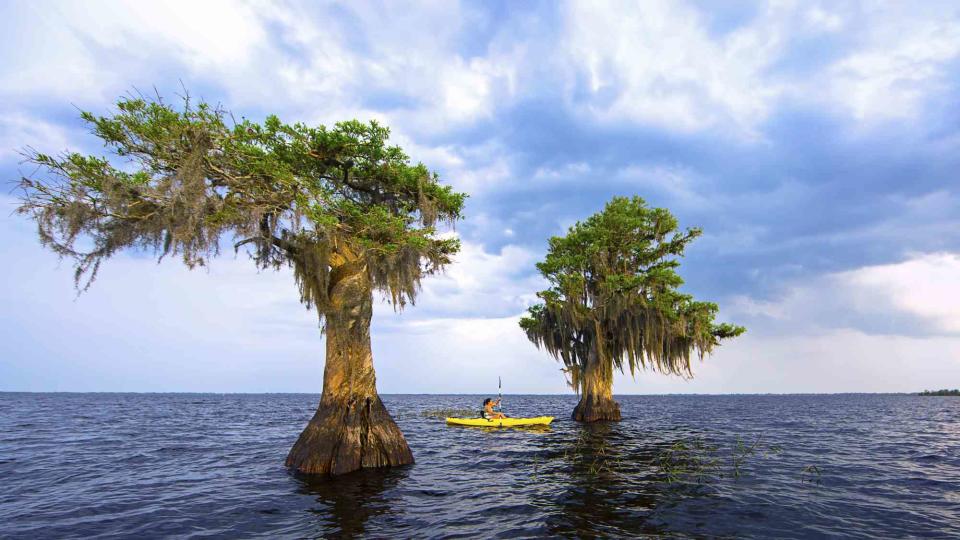
Visit Indian River County
Most people think of beachy oceanfront destinations when they think of Florida. Frequently overlooked are the inland lakes beloved by fishing and boating enthusiasts in the Fishing Capital of the World, as well as by folks just looking for a freshwater escape and a taste of “Old Florida.”
In fact, Florida is home to more than 7,500 freshwater lakes and other bodies of water, and they are open year round for recreation activities. Here are a few of our favorite lake destinations in the Sunshine State waiting for you to take the bait.
Lake Okeechobee

VISIT FLORIDA
Lake Okeechobee, which means “Big Water” in the Seminole language, is the largest freshwater lake in Florida and is legendary for largemouth bass fishing. Visitors can explore the Big Cypress Seminole Reservation to learn the history and modern-day life of the Seminole community at the Ah-Tah-Thi-Ki Museum, sleep in thatched-roof traditional dwellings called chickees, or take an airboat ride on the Big O (Lake Okeechobee).
Lake Tohopekaliga
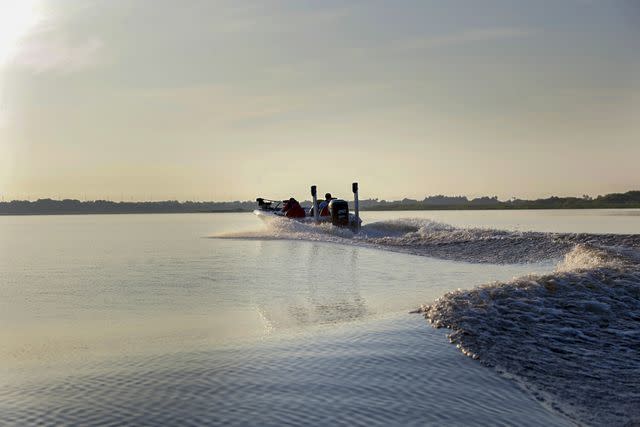
Experience Kissimmee
Bordered on its north shore by historic downtown Kissimmee in Osceola County, Lake Tohopekaliga (or Lake Toho) is a 23,000-acre lake renowned for its bass fishing by anglers. But there’s more to enjoy beyond fishing: visitors can enjoy a splash pad and playground, as well as walking trails and picnic areas at Kissimmee Lakefront Park. You might also spy local wildlife like otters, turtles, and alligators in and around Lake Toho.
Lake George
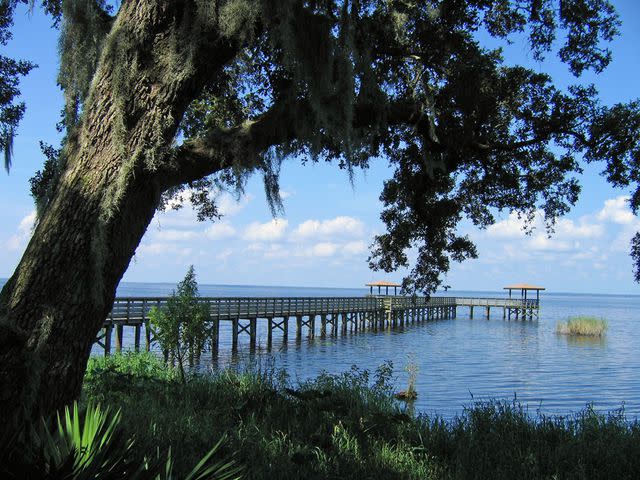
County of Volusia
As the second largest lake in Florida, Lake George is replete with fish, with a catch rate of .56 fish per hour, according to Visit Florida statistics. The 46,000-acre lake is situated in the Ocala National Forest, where hiking trails wind through longleaf pine trees—some ending at the lake’s shores. Paddle along the lake and stay overnight at a local campground for a relaxing retreat.
Lake Seminole

At the borders of the Florida, Georgia, and Alabama state lines, you’ll find Lake Seminole, a manmade lake fed by the Flint, Chattahoochee, and Apalachicola rivers. Lake Seminole Park offers a two-mile hiking and biking trail, as well as picnic shelters and a public boat ramp. Historic tidbit: The remains of the U.S. Infantry’s Fort Scott, built in 1816, lie at the bottom of Lake Seminole.
Lake Griffin
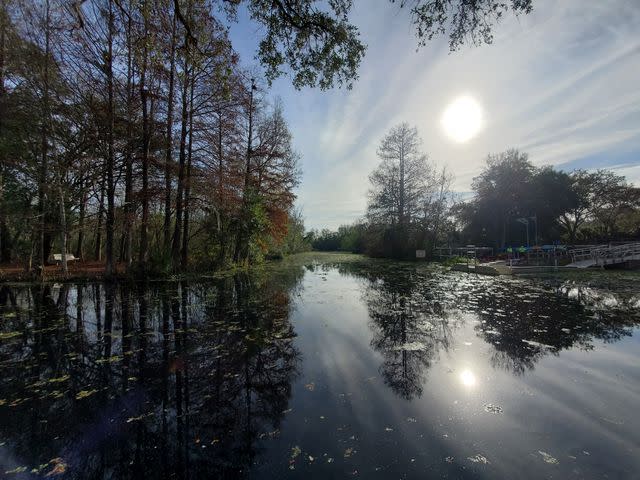
Florida State Parks
Part of the Harris Chain of Lakes, Lake Griffin is situated north of the city of Leesburg, Florida, in Fruitland Park and is a prized spot for summer panfishing. Visitors can rent canoes or kayaks and paddle through the marshes. Guided tours and pontoon boat tours are also popular activities. Lake Griffin State Park offers two miles of hiking trails and is rich with wildlife observation opportunities. You might see bobcats and coyotes, and there are alligators that live in the lake (swimming is prohibited for this reason).
Alligator Lake
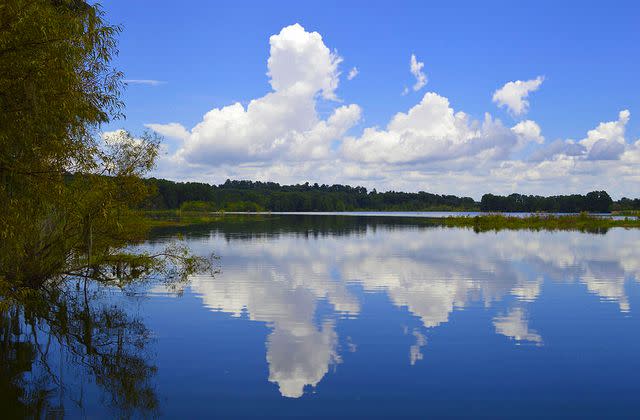
Lake City, Florida's Springlands
Osceola County’s Alligator Chain of Lakes is situated at the headwaters of the Everglades and is a series of 12 small lakes, five of which are connected by canals that you can boat through and offer excellent fishing and birdwatching, especially on Alligator Lake, which is the largest. Despite its name, Alligator Lake doesn’t particularly stand out among Florida lakes for its alligator population (they live in greater numbers in other lakes). St. Cloud, Florida, is about a 15-minute drive away.
Lake Eola

VISIT FLORIDA
You don’t have to leave Orlando to appreciate the beauty of Lake Eola. The lake was formed with the aid of a natural sinkhole—an aquifer some 200 feet below the surface helps keep the lake filled. There’s a paved 0.9-mile walking trail circling the lake, as well as a Japanese Rock Garden and a Chinese Ting, and the area is usually bustling with events, including live music or plays at the Walt Disney Amphitheater.
Dead Lakes

Gulf County Florida Tourism
Described as “creepy and mysterious,” the Dead Lakes are so named due to the forest of dead cypress tree stumps that dot the lake. Located near the town of Wewahitchka, Florida, the trees here died when water from the Apalachicola and Chipola rivers flooded a cypress swamp, later followed by salt water. But tupelo gum trees still thrive here and their blossoms are the source of the famous tupelo honey. In fact, beekeepers still travel by “bee barge” on the Apalachicola River Basin to collect this specialty honey from this area of Florida. Kayak through the Dead Lakes and reward your hard work with a honey sampling at a local apiary.
Winter Haven Chain Of Lakes

Visit Central Florida
We couldn’t pick just one lake in the collection of lakes that spans the cities of Winter Haven, Lake Alfred, and Lake Hamilton. This Central Florida Chain of Lakes is connected by canals with a northern and southern chain, comprising nearly 30 lakes altogether. With more than 550 lakes in Polk County alone, it’s easy to understand how Winter Haven is considered the Water Skiing Capital of the World. Visitors can boat through the canals and stop at lakefront restaurants and bars along the way, which makes for an ideal day out on the water.
Lake Apopka

Elizabeth W. Kearley/Getty Images
The fourth largest lake in Florida is Lake Apopka, located 15 miles from Orlando in Orange County. Lake Apopka is the headwater lake of the Harris Chain of Lakes, or Ocklawaha Chain of Lakes, as it’s sometimes called. Thickly bordered with cypress swamps, it’s a place teeming with fish and wildlife, giving visitors an up-close glimpse of rugged, natural Florida. Take a slow 11-mile wildlife drive through this preserve or take a boat or kayak on the lake. Hikers can challenge themselves to a 17.2-mile hike each way along the Lake Apopka Loop Trail, including past a historic pumphouse. Trailheads are clearly marked and have wildlife information kiosks.
Lake Tarpon
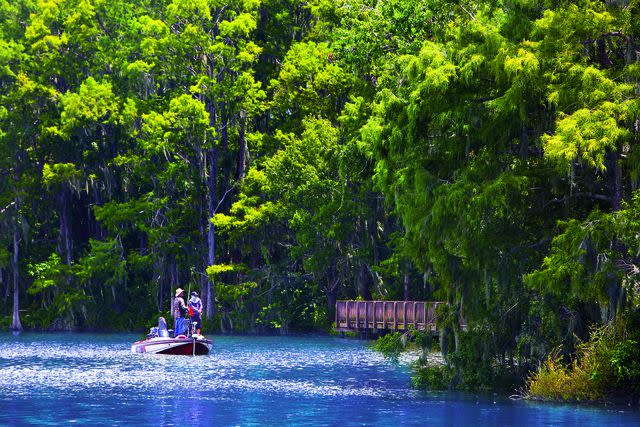
Visit St. Pete/Clearwater
This freshwater lake, 10 miles west of Tampa, spans the cities of Palm Harbor and Tarpon Springs, Florida. Lake Tarpon is popular with anglers for trophy-sized striped bass and largemouth bass fishing. Though swimming is discouraged as with most Florida lakes due to alligators, people enjoy sailing, kayaking, and waterskiing here. Fun fact: according to local lore, an unidentified lake monster nicknamed “Tarpie” roams these waters, though these reports remain unconfirmed.
Crescent Lake

This crescent-shaped lake spans nearly 16,000 acres across Putnam and Flagler counties. Fishing for largemouth bass, crappie, bluegill, and shellcracker is most common. Crescent Lake connects to the St. Johns River through Dunn’s Creek. American painter Winslow Homer painted several landscapes on this river. Inspiration through nature continues. Visitors love watching the golden sunrises here, occasionally sighting bald eagles and ospreys.
Blue Cypress Lake

Visit Indian River County
The largest lake in Indian River County, Blue Cypress Lake, is still a bit of a hidden gem for birdwatchers and nature lovers. Paddle your way through thick bald cypress trees adorned with moss as you marvel at the ospreys, alligators, snakes, and other wildlife who’ve made this lake and its undeveloped shoreline home. You can arrange a guided airboat ride, eco boat tours, or photography tours at Blue Cypress Lake to create a special memory.
Lake Tulane

Visit Sebring
One of a few Florida lakes formed from natural sinkholes, Lake Tulane in Highlands County has a sand bottom and clear waters. People enjoy swimming here from a public beach on the southern side of the lake. It also draws people for fishing. Lake Tulane Park has a small playground and covered picnic facilities.
Lake Manatee
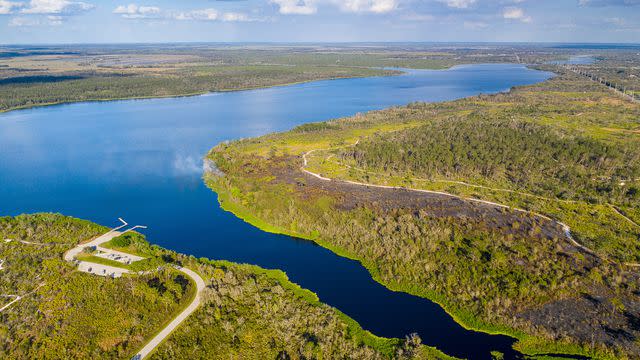
Bradenton Area Convention & Visitors Bureau
Created with the construction of a dam across the Manatee River, Lake Manatee in Bradenton offers a peaceful natural environment to enjoy freshwater activities like canoeing and swimming (though visitors should always beware of alligators), as well as a chance to walk on the wild side (you might even spot the occasional wild boar). Camping, hike and bike trails, fishing, are some activities visitors enjoy at Lake Manatee State Park. Despite the name, you won’t find manatees in the lake, as the construction of the dam in the 1960s blocked them from entering.
Lake Santa Fe

James Steele
James SteeleThe cypress trees silhouetted by the sunset at Santa Fe Lake make for a spectacular view while paddling across the clear, calm waters of this spring-fed lake located 17 miles east of Gainesville, Florida. Ospreys nest here in winter months on the rugged, undeveloped shoreline that some visitors call a “slice of heaven.”
For more Southern Living news, make sure to sign up for our newsletter!
Read the original article on Southern Living.

